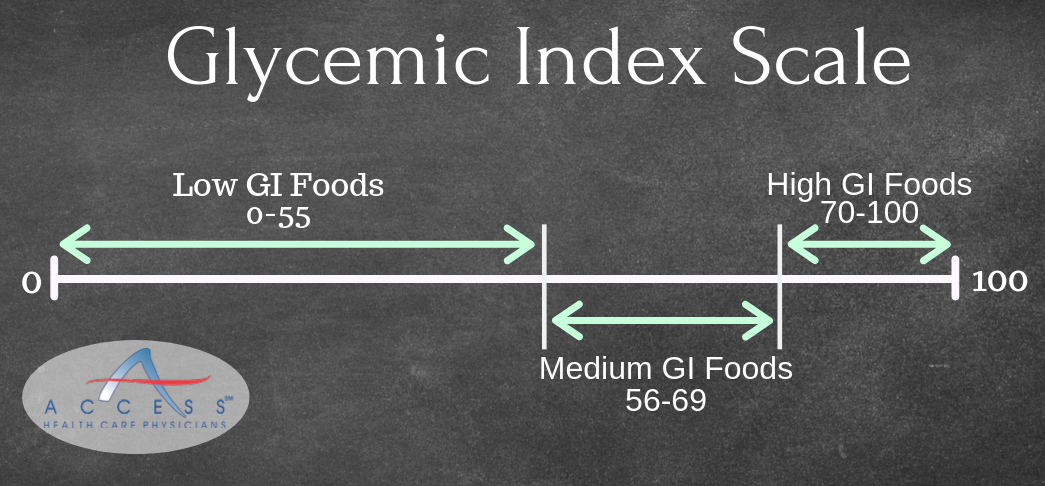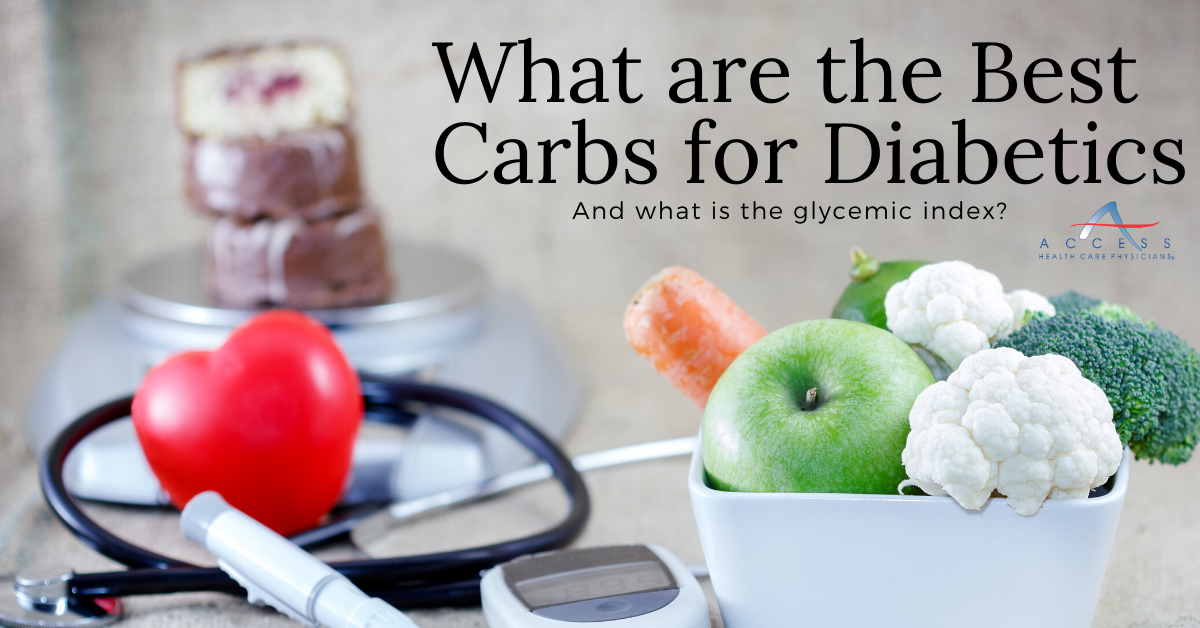Carbohydrates often get a bad rap, however, along with protein and fat, carbohydrates are an essential nutrient necessary for survival. While all carbohydrates help provide energy, not all carbohydrates release energy at the same rate. Some are fast-release and others are slow-release.
Fast-release carbohydrates release glucose quickly and often cause a spike in blood sugar levels. On the other hand, slow-release carbs provide the body with a more sustained release of glucose, or energy. So how do we know which carbohydrates are fast-release and which are slow-release? The Glycemic Index can help.
What is the Glycemic Index (GI)?
The Glycemic Index (GI for short) is a scale that helps measure how quickly glucose is released into the bloodstream. This scale ranks individual foods from 0-100. A food that is lower on the GI scale is absorbed and digested at a slower rate than foods higher on the scale.
Below is a visual representation of the glycemic index, as stated by the American Diabetes Association.
In addition to controlling blood sugar levels, a diet based on low GI foods can also lead to improvements in cardiovascular health, cholesterol levels, weight management and more.

What Are Some Low GI, or Slow-Release Carbs I Can Enjoy?
Quinoa – Often called an “ancient grain,” quinoa is technically a seed. Low on the GI scale, quinoa (pronounced KEEN-wah) is also densely nutritious. It is high in protein and contains potassium, iron, vitamin B along with many other vitamins and minerals.
Quick Tip: Be sure to rinse your quinoa before cooking.

Legumes & Pulses – Generally this category has a high fiber and protein content, helping keep you feeling full longer, and are low on the GI scale. They also have the added benefit of providing vitamins and minerals such as iron, zinc, B vitamins and more.

Nuts & Nut Butters
No-added-sugar nut butters and nuts are low on the GI scale. They are also high in protein and fiber, and contain a high amount of monounsaturated fats (the good-for-you kind of fat.) A published study from 2013 found that female type 2 diabetics who consumed peanut butter or peanuts each day had improved glucose control and reduced appetite when compared to those who did not consume nuts and nut butters.

Vegetables:
There are also many vegetables that fall low on the glycemic index. Here are just a few:
Sweet Potato
Butternut Squash
Parsnips
Cauliflower

Fruits: While it may be easy to assume that all fruits would land high on the GI scale, there are many which are slow-digesting and can be enjoyed including:
Plum
Grapefruit
Peach
Apricot
Apple
Pear
(See below for a smoothie recipe to enjoy some of these fruits!)
Dairy: Most no-sugar-added dairy falls lower on the GI scale. Try some of the following:
Milk
Yogurt
Soy Milk

Breads: Not all breads are created equal. White bread is very high on the GI scale, however, opt for one of the choices below for lower-GI bread options:
Mixed Grain Bread
Pumpernickel
Sourdough Rye
Rye
Sourdough Wheat
Take Away
Choosing a diet with foods low on the glycemic index scale can have many benefits. Keep in mind that there are other factors that also have an impact on sugar levels such as portion size and food combinations.
Smaller meals, with smaller portions, have less effects on blood glucose levels than larger meals. Also, keep in mind that the GI rating of a specific food is in regard to the way that food affects blood glucose when eaten alone. It has been noted though, that combining higher GI foods with lower GI foods in the same meal helps glucose release at a steadier rate, helping to control blood glucose spikes.
It is also important to note that the Glycemic Index of a food does not reflect its nutritional content. Be sure to enjoy a wide variety of nutrient-dense foods to ensure proper nutrition. Always speak with your doctor about any diet changes. You may even ask to see a nutritionist or dietician.
For more great content, be sure to “Like” us on Facebook and Instagram and check our Blog page often.
Written by S. Campbell for Access Health Care Physicians, LLC.


